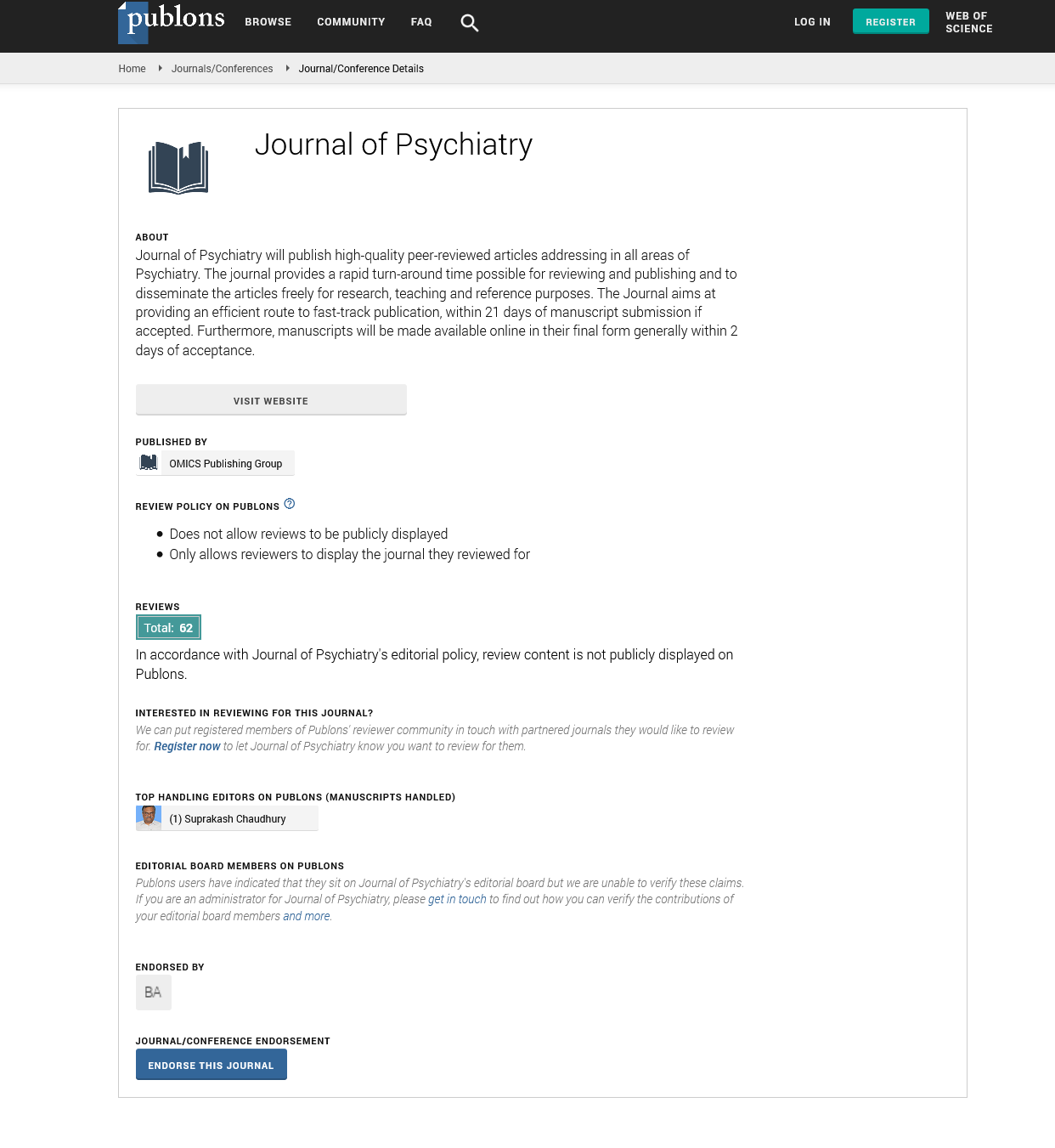PMC/PubMed Indexed Articles
Indexed In
- RefSeek
- Hamdard University
- EBSCO A-Z
- OCLC- WorldCat
- SWB online catalog
- Publons
- International committee of medical journals editors (ICMJE)
- Geneva Foundation for Medical Education and Research
Useful Links
Share This Page
Open Access Journals
- Agri and Aquaculture
- Biochemistry
- Bioinformatics & Systems Biology
- Business & Management
- Chemistry
- Clinical Sciences
- Engineering
- Food & Nutrition
- General Science
- Genetics & Molecular Biology
- Immunology & Microbiology
- Medical Sciences
- Neuroscience & Psychology
- Nursing & Health Care
- Pharmaceutical Sciences
Perspective - (2022) Volume 25, Issue 5
Depression and Anxiety among Patients Undergoing ART Treatment
Feng Shen*Received: 02-May-2022, Manuscript No. JOP-22-17023; Editor assigned: 05-May-2022, Pre QC No. JOP-22-17023(PQ); Reviewed: 19-May-2022, QC No. JOP-22-17023; Revised: 26-May-2022, Manuscript No. JOP-22-17023(R); Published: 02-Jun-2022, DOI: 10.35248/2378-5756.22.25.508
About the Study
Infertility is defined as a couple’s inability or failure to conceive after regular, unprotected intercourse for 12 months, or due to an impairment of a person’s capacity to reproduce either as an individual or with his/her partner. The World Health Organization estimates that the incidence of infertility is 10– 15%, and it may be higher in developing countries. Male factors are believed to contribute at least partially to difficulties with achieving pregnancy in as many as 50% of infertile couples, and approximately 20% of couple infertility can be attributed solely to the male. Since the birth of the first baby conceived through In Vitro Fertilization (IVF) in 1978, Assisted Reproductive Technology (ART) has made great progress and is now more and more accepted by the public.
Anxiety and depression are the most frequently occurring psychological disorders among infertile couples. It is widely accepted that women are more likely to be affected than men by infertility problem, and there have been a large number of studies on the relationship between female psychological stress and the outcome of ART. In contrast, there are few researches about the influence of male psychological stress on the outcome of ART. The purpose of this article is to investigate the prevalence of depression and anxiety of men during ART, and to explore the effects of anxiety and depression on ART results.
ART includes several techniques that involve different levels of medicalization. In Vitro Fertilization (IVF) and Intracytoplasmic Sperm Injection (ICSI) are the most widely used ART procedures worldwide and are thus the focuses of this study. In 1978, the birth of Louise Brown marked the first successful application of IVF technology. ICSI technology was first applied and reported in 1992 by Palermo. It is estimated that at the end of this century, 157 million babies corresponding to 1.4% of global population will be born through ART. Both IVF and ICSI treatments involve a complex and demanding regimen, and repeated treatment cycles are usually necessary to achieve pregnancy. It was originally reported by Edwards and colleagues in 1980 that the pregnancy rate of IVF was 6%.
A large number of literatures have been reported that experience of ART significantly affects patients’ quality of life, given also its negative impact over individual psychosocial well-being, depression and anxiety. The stress of infertility treatment was ranked second to that involving the death of a family member or divorce by couples undergoing this treatment. About 23% of couples who experienced the ART gave up with treatments because of the serious emotional burden. Previous studies on major depression in infertile people yielded a prevalence of 36.7% in the USA.
The incidence of anxiety and depression in men during ART treatment was about 8%. Although the SAS and SDS scores were higher in the nonpregnant group than those in the pregnant group, there was no significant difference in the incidence of anxiety and depression between the two groups. This study suggests that in the process of ART treatment, male patients should be told that anxiety and depression are not necessarily related to the outcome of ART treatment.
Citation: Shen F (2022) Depression and Anxiety among Patients Undergoing ART Treatment. J Psychiatry. 25:508.
Copyright: © 2022 Shen F. This is an open-access article distributed under the terms of the Creative Commons Attribution License, which permits unrestricted use, distribution, and reproduction in any medium, provided the original author and source are credited.

